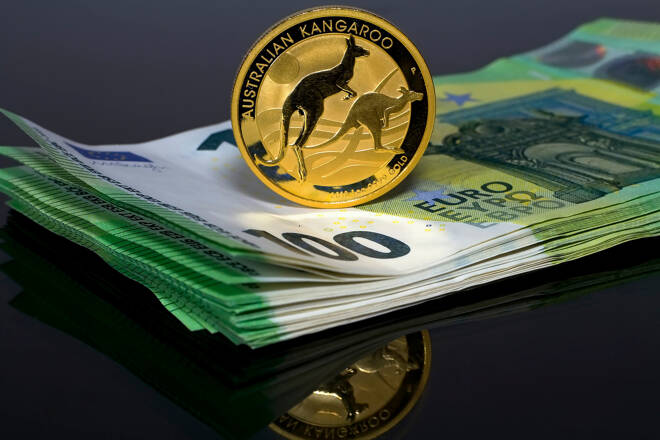Advertisement
Advertisement
AUD to USD Forecast: A Return to $0.70 Hinged on US Inflation
By:
Monetary policy divergence remains tilted toward the Aussie dollar. However, US inflation numbers on Friday could influence Q1 2024 Fed rate hike bets.
Highlights
- The AUD/USD rallied 1.07% on Thursday, ending the session at $0.68017.
- US GDP and Philly Fed Manufacturing numbers fueled bets on a Q1 2024 Fed rate cut.
- US personal income/spending and inflation are in the spotlight on Friday.
Thursday Overview of the AUD/USD
The AUD/USD rallied 1.07% on Thursday. After a 0.48% loss on Wednesday, the Australian dollar ended the session at $0.68017. The Australian dollar fell to a low of $0.67232 before rising to a high of $0.68038.
Australian Private Sector Credit Holds Steady
On Friday, private sector credit and housing credit drew interest. An elevated interest rate environment continues to affect households. However, demand for credit remained robust in November, supporting a positive consumption outlook.
Private sector credit increased by 0.4% in November (Oct: +0.3%), with housing credit up 0.4% (Oct: +0.4%). However, an upward trend in private sector credit must translate into a pickup in consumption to draw the interest of the RBA.
A positive consumer spending outlook could fuel demand-driven inflation and reduce bets on a 2024 RBA rate cut. An elevated interest rate environment would impact borrowing costs and disposable income. Downward trends in disposable income could curb consumer spending and dampen inflationary pressures.
US Inflation in the Spotlight
On Friday, US personal income/spending and Core PCE Price Index numbers warrant investor attention. A pickup in personal income/spending and sticky inflation could reduce bets on a Q1 2024 Fed rate cut.
Upward trends in personal income and spending could fuel demand-driven inflation. Sticky inflation could force the Fed to take a more hawkish rate path. A more hawkish rate path would curb consumer spending and dampen inflationary pressure.
Economists forecast the Core PCE Price Index to increase 3.4% in November (Oct: +3.5%). Significantly, economists expect a pickup in personal income and spending midway through Q4.
Other US economic indicators include durable goods orders, new home sales, and consumer sentiment. However, the personal income/spending and inflation numbers will be the focal point.
Short-Term Forecast
Near-term trends for the Aussie dollar will hinge on the Personal Consumption Expenditures Report. Softer-than-expected US inflation figures would tilt monetary policy divergence toward the Aussie dollar. Increasing bets on a Q1 2024 Fed rate cut would support an AUD/USD move toward $0.70.
AUD/USD Price Action
Daily Chart
The AUD/USD held above the 50-day and 200-day EMAs, sending bullish price signals.
An AUD/USD break above the $0.68096 resistance level would support a move toward the $0.68944 resistance level.
The US economic calendar will be the focal point of the Friday session.
However, a drop below the $0.67500 handle would bring the $0.67286 support level into play.
A 14-period Daily RSI reading of 68.35 indicates an AUD/USD move through the $0.68096 resistance level before entering overbought territory (typically above 70 on the RSI scale).
4-Hourly Chart
The AUD/USD remained above the 50-day and 200-day EMAs, affirming bullish price signals.
An AUD/USD move through the $0.68096 resistance level would give the bulls a run at the $0.68944 resistance level.
However, a fall through the $0.67500 handle would bring the $0.67286 support level and the 50-day EMA into play.
The 14-period 4-Hourly RSI at 65.94 suggests an AUD/USD move through the $0.68096 resistance level before entering overbought territory.
About the Author
Bob Masonauthor
With over 28 years of experience in the financial industry, Bob has worked with various global rating agencies and multinational banks. Currently he is covering currencies, commodities, alternative asset classes and global equities, focusing mostly on European and Asian markets.
Did you find this article useful?
Latest news and analysis
Advertisement
